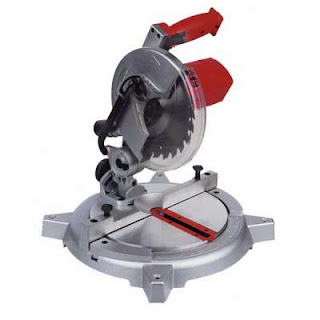Miter Saws and Compound Miter Saws: The Motorized Revolution
It wasn't that long ago that making accurate crosscuts in wood required a skilled hand, a sharp handsaw, and a chunk of time. But in the early 1970s, a new saw began to appear on job sites that promised to speed up these cuts: the motorized miter saw. A simple miter saw is essentially a lightweight circular saw mounted on a spring-loaded pivoting arm supported by a metal base.While these relatively small, inexpensive saws don't have the cutting capacity of a radial arm saw, they are very portable and rugged enough to stand up to daily use (and abuse) on the job and survive the pickup truck ride to the next job.
Cutting Capacity
A miter saw with a 10-inch blade and a hefty 12 to 15 amp motor can make quick, accurate 90-degree cuts in two-by-fours and two-by-sixes. If you rotate the blade left or right, they can also make miter cuts, and some of them can be pivoted past 45 degrees in one or both directions. But 10-inch saws have one major limitation: cutting capacity. Most of them are limited to about a 5 1/2-inch cut at 90 degrees, and even less when cutting miters.For this reason, some manufacturers also offer miter saws with 12-inch, 14-inch, and even 15-inch diameter blades, which enables them to make cuts that are wider (up to about 7 1/2 inches) and higher (up to about 3 1/2 inches). For some users, this capacity still isn't enough for the job, which is why the pricier but more versatile, sliding compound miter saws have become so popular. In fact, regular chop saws are disappearing from the marketplace.
Compound Miter Saws and Fences
Miter saws that can make bevel cuts as well as miter cuts (and most of them can nowadays) are technically called "compound" miter saws. If you tilt the blade while cutting at an angle, these saws can cut crown molding while the stock lies flat on the table. But tilting the blade means that the fence has to get out of the blade's way when the saw head heels over. To achieve this, some manufacturers significantly reduce the height of their fences near the blade, then advise users to add a supplemental wood fence when making regular cuts that need extra-height support. But a better approach is to use a sliding fence, which provides full-height support and moves out of the way for bevel cuts.Miter Matters
Preset detent positions on the saw's turntable (typically set at 0, 15, 22.5, 30, and 45 degrees) help to position the blade quickly and accurately for common miter cuts. Some manufacturers also offer detents for the common crown molding angles on the miter and bevel scales. But the detents on some saws can be tricky to override if you want to make minute adjustments to the fit of a cut, say, a 32.25-degree miter instead of the 31.62 degrees that crown molding typically requires. The miter and bevel scales offered by different manufacturers aren't equally easy to read, either. This is particularly true of bevel scales, which are often partially hidden behind the body of the saw.Before You Buy
The points below should help you choose a compound miter saw that will suit your needs:- Weight: If you do a lot of moving around, weight can be an important factor. Some saws weigh as little as 30 pounds, while heavier saws can weigh in at 50 pounds or more.
- Handle comfort: Some saws are more balanced than others when you pick them up by their carrying handle. The position of the trigger handle may also affect how comfortable the saw is to operate. Many people prefer D-shaped handles oriented perpendicular to the blade.
- Saw blade: Most saws come equipped with a carbide-toothed saw blade as standard equipment. If the saw comes with an inexpensive steel blade, you'll want to replace it with a higher-quality blade, specifically designed for a miter saw, for consistently smooth, straight cuts.
- Blade guard: It's easier to see the cut line if your saw has a smoothly operating blade guard that automatically moves out of the way as the blade nears the cut, as opposed to being pushed out of the way by the workpiece.
- Accessories: Finally, accessories such as dust bags, table extensions, and stock clamps often are included with the price of the saw, but not always. Remember to add them to your calculations if you need to purchase them separately, since they can have a considerable effect on your total cost.
